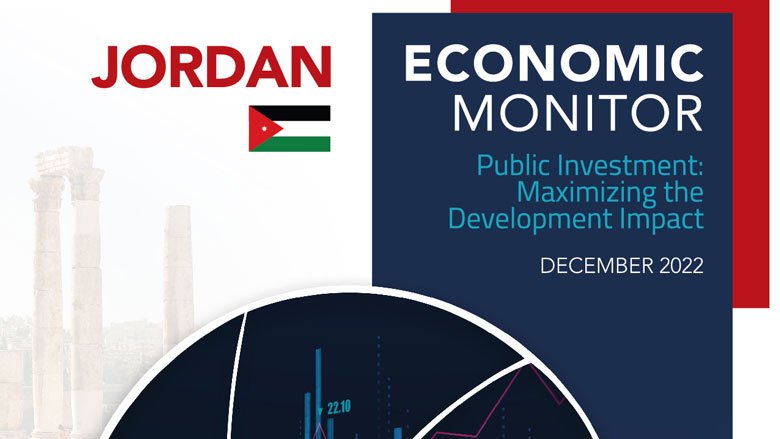Despite a challenging global environment, Jordan’s growth exceeded expectations during the first half of 2022. Propelled by a strong rebound in international tourism, the full reopening of the economy, and improving exports, real GDP accelerated to 2.7 percent. However, the rebound in economic activity was only modestly reflected on labor market indicators with unemployment rates declining only gradually. Inflation has reached its highest level since 2018 but remains contained compared to regional peers, due to temporary fuel subsidies and a number of other price control measures introduced in 2022. Yet, the untargeted subsidy support came at a fiscal cost as fiscal consolidation adjustments have slowed down despite good tax performance. On the external front, elevated global commodity prices led to a significant rise in Jordan’s import bill, outpacing the effect of the increased merchandise exports and tourism. Moreover, capital and financial inflows did not keep up with the widening current account deficit, resulting in a widening of the balance of payment deficit and a drawdown in foreign exchange reserves. Nonetheless, due to its substantial reserve buffers, the Central Bank’s gross foreign reserves remained at an adequate level, while Jordan continues to retain investors’ confidence and access to foreign financial markets.
Jordan’s economic recovery in 2022 is expected to be driven by a full rebound of the services sector, helped by the full reopening of the economy and a strong rebound in tourism. However, highly volatile global fuel and food prices are impacting both domestic consumption and the trade balance. Risks surrounding Jordan’s outlook include a looming global economic downturn, prolongation of the global food and energy crisis, and the impact of higher borrowing costs and widening losses from state-owned water and electricity sectors on debt dynamics.
The Special Focus highlights the role of public investment as a driver of growth, with a particular focus on its recent trends, as well as its efficiency and effectiveness. This is particularly relevant given Jordan’s constrained fiscal envelope. Public investment spending has been suffering from a steady decline during the past two decades to meet the fiscal consolidation targets, consistent under-execution, large dependency on external aid and lack of budget for operation and maintenance cost. Its efficiency can be maximized by having in place financially realistic long-term strategic planning, transparent project selection and an adoption of a medium-term perspective. Purposefully integrating climate concerns in public investments would also advance the country’s achievement of its climate targets.
- Jordan Economic Monitor, Fall 2022: Public Investment: Maximizing the Development Impact (Full report in a PDF format)


